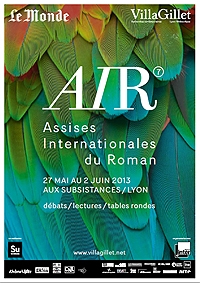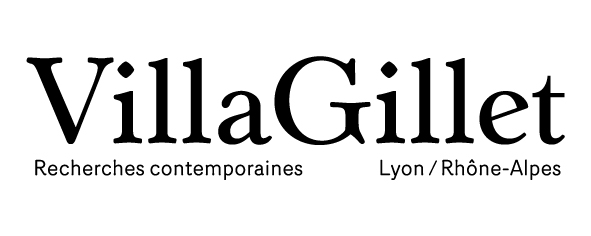Goldie Goldbloom: Portraits and Faces - Appearance and Disfigurement
![[title-image]1332154747280[/title-image] Goldie Goldbloom © Brian McConkey](https://cle.ens-lyon.fr/anglais/images/goldbloom_1380286026317-jpg) Goldie Goldbloom was born in Australia. For close to twenty years she taught middle-school and high school and worked as a librarian. She has published numerous short stories in reviews such as StoryQuaterly, Narrative, and Prairie Shooner, as well as some non-fiction. Collections of her writing have also been published in Australia and the United States. She received the Jerusalem Post International Fiction Prize for her writing. Goldbloom currently lives in Chicago with her eight children.
Goldie Goldbloom was born in Australia. For close to twenty years she taught middle-school and high school and worked as a librarian. She has published numerous short stories in reviews such as StoryQuaterly, Narrative, and Prairie Shooner, as well as some non-fiction. Collections of her writing have also been published in Australia and the United States. She received the Jerusalem Post International Fiction Prize for her writing. Goldbloom currently lives in Chicago with her eight children.
Les éditions Christian Bourgois publieront prochainement un recueil en français des textes écrits à l'occasion des assises du roman.
What does “realism” mean when we are talking about a fictional character? Why are there so many modern novels and works of art portraying disfigurement?
Chekhov is well known for his impartial observations of his characters and for his grasp of “realism”. When I first read his description of the lady with the little dog, I discovered that she is “a fair-haired young lady of medium height, wearing a beret.” I was puzzled. This less than enthusiastic description of the woman Gurov will come to love leaves out many basic details such as the colour of Anna Sergeyevna’s eyes and whether she has an attractive figure. I wondered why Chekhov departs from the wordier earlier traditions of written portraiture, and how his simple sketch of Anna illustrated the “realism” for which he is known.
Neurology tells us that human perception is an uncanny thing, becoming more active when figures are incomplete (“dis-figured”). It’s a neurological imperative to “fill in the blanks.” All art forms leave out details, (negative space, white space, the unsaid and the unknowable, omissions, silence, rests) and through these absences, draw us into the work. Chekhov’s incomplete description of Anna invites us to create a more fully formed gestalt. Without conscious effort, we form vivid and dynamic images of Anna that are just barely connected to Chekhov’s words. This internal creation of character is the reason that “the movie will never be as good as the book.” We have, effectively, written our own internal version of Chekhov. We have created something that, for us, is “real.”
Our biological imperative to notice differences and absences is powerful. It’s a hard-wired trait. Even as infants we are adept at knowing what belongs and what doesn’t. We are also encoded to prefer symmetrical features, and this symmetry is described as “beauty”. But in his work, Chekhov repeatedly defies this bias for symmetry. Kukin in “The Darling”, for example, is portrayed as asymmetrical: “He was a small thin man, with a yellow face, and curls combed forward on his forehead. He spoke in a thin tenor; as he talked his mouth worked on one side…”(my italics). Why does Chekhov, an acknowledged master of the short story, use asymmetry and disfigurement in many of his character descriptions?
A possible answer: When symmetry is not present, we are disconcerted. We stop and stare. Staring is not an act of willful judgment. Although staring can fill both the starer and the stared at with confusion and shame, staring is, nevertheless, an act of biological judgment. Our biological imperative to notice differences compels our eyes to linger too long. Within the arts, the word for staring is lingering. Unlike the general public, writers and artists want the public to linger in their works. Is it any wonder that there is a long history of disfigurement in literature and art?
It’s not hard to love that which is “beautiful”. Billions of people obey their inbuilt compulsion to prefer symmetry every day. This preference for beauty is the stuff of advertising and online dating. However, when you stroke a planed piece of wood, despite the pleasure of the surface, your hand does not linger on the smoothness, but instead seeks out tiny splinters. Your hand returns again and again, obsessively searching for that which is not smooth. Instead of reveling in the absolute beauty of the satiny surface, your attention lingers in the place of “disfigurement”. Disfigurement in art and literature is a place where expectations of beauty are defied, and you catch your breath with surprise and, often, pleasure.
Pour citer cette ressource :
Goldie Goldbloom, Goldie Goldbloom: Portraits and Faces - Appearance and Disfigurement, La Clé des Langues [en ligne], Lyon, ENS de LYON/DGESCO (ISSN 2107-7029), septembre 2013. Consulté le 04/12/2025. URL: https://cle.ens-lyon.fr/anglais/litterature/entretiens-et-textes-inedits/goldie-goldbloom-portraits-and-faces-appearance-and-disfigurement



 Activer le mode zen
Activer le mode zen

